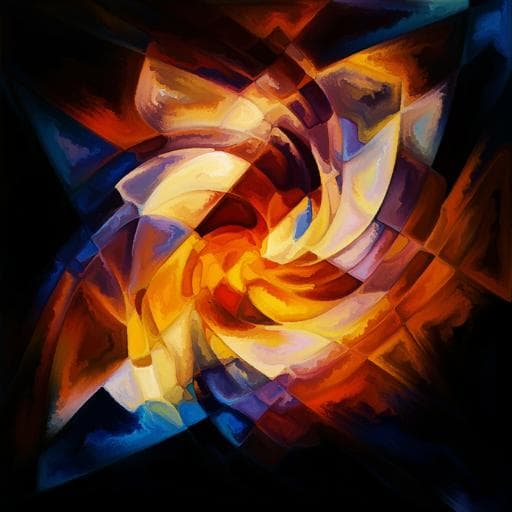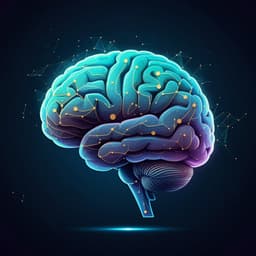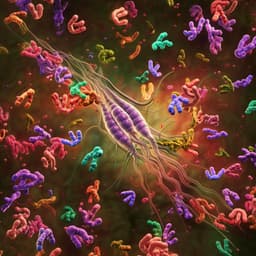
Education
The impacts of a high-school art-based program on academic achievements, creativity, and creative behaviors
P. Egana-delsol
This fascinating study conducted by Pablo Egana-delSol explores how an art-based program can enhance academic performance, creativity, and creative behaviors in adolescents. With significant improvements in grades and an increased interest in pursuing further education, the findings highlight the transformative power of art in education.
~3 min • Beginner • English
Introduction
The study investigates whether intensive, high-quality, school-based arts education can causally improve students’ creativity, creative behaviors, and academic achievement. It examines Chile’s Acciona Program (AP), which places professional artists (not art teachers) in public high schools to deliver 90-minute weekly workshops for a semester across disciplines (painting, dance, music, etc.). Motivated by policy interest in fostering creativity and evidence that educational experiences shape higher cognitive functions and creative thinking, the study aims to provide causal evidence—often lacking in prior work—on creativity, related behaviors, and academic performance. The central hypothesis is that intensive participation in high-quality arts programming increases creativity and, through this channel and others, improves academic outcomes and postsecondary aspirations. Four hypotheses are articulated: (H1) AP increases creative thinking ability and inclination; (H2) AP improves socioemotional skills; (H3) AP increases intent to pursue higher education; (H4) AP increases appreciation and participation in cultural activities.
Literature Review
Prior studies show correlations between arts participation and better grades, creativity, and richer peer relationships, and report associations with improved school performance. However, much of the literature is correlational and vulnerable to selection bias, limiting causal interpretation. The paper responds to this gap by employing propensity score matching (PSM) and doubly robust reweighted regression to more plausibly estimate causal impacts. Theoretical and empirical work suggests benefits when programs are of high quality and sufficiently intensive. Creativity is assessed with widely recognized Torrance Tests (TTCT), focusing on divergent thinking, and socioemotional skills are often measured via self-report scales, though the literature highlights potential biases of self-report instruments. The study engages with human capital frameworks that consider both cognitive and noncognitive skills, and with research on critical periods and dynamic complementarity, noting that earlier interventions may yield larger effects but that adolescence remains a pivotal stage for developing creative and socioemotional skills.
Methodology
Design: Quasi-experimental evaluation using propensity score matching (PSM) and doubly robust reweighted regression (DRRW) to estimate average treatment effects of the Acciona Program (AP). Sample: 297 public high school students (ages 14–16; 9th–10th grades) across four Chilean schools; treatment intensity defined as participation in one semester (one workshop) or at least two semesters (two workshops). School and cohort selection ensured that participation was driven by class-level assignment by principals rather than student self-selection; some schools alternated classes across semesters, creating variation in exposure intensity. Active control groups engaged in alternative workshops during AP time. Measures: - Creativity: Torrance Test of Creative Thinking written (TTCTW: fluency, flexibility, originality) and graphical (TTCTG: five norm-referenced measures and thirteen criterion-referenced creative forces). - Socioemotional skills: Piers-Harris Self-Concept Scale (PHSCS). - Academic outcomes: standardized GPAs (overall, language, math, art); willingness to pursue higher education. All academic and test scores standardized by course/institution. PSM: Treatment modeled via binary probit; covariates included sex, parental education, household income (dummies), school/class, books at home, and prior extracurricular arts participation (inside/outside school). Kernel Epanechnikov matching (bandwidth 0.06) was primary; robustness checks included nearest neighbor and radius matching, with common support imposed. Matching quality assessed via standardized bias reduction and t-tests. DRRW: Inverse-probability weights based on estimated propensity scores applied within regression models (linear for continuous outcomes; probit for higher education intent), controlling for the same covariates and school dummies; robust standard errors used. Analytic strategy compared one-semester vs no AP and at least two semesters vs no AP, testing for dose-response. Data collection: Surveys administered during school hours; TTCT scoring double-corrected; academic records obtained from schools. Ethics: Exemption from IRB per institutional policy for non-invasive evaluation of ongoing public programs; participation voluntary; anonymity preserved.
Key Findings
- Dose-response/intensity: Significant impacts required substantial exposure; at least two semesters of AP generated the clearest and largest effects. - Academic achievement: For students with at least two semesters of AP, overall GPA increased by 0.55 sd, language GPA by 0.61 sd, math GPA by 0.36 sd, and art GPA by 0.33 sd. Effects after one semester were smaller and limited (notably language GPA). AP participation also increased willingness to pursue higher education by about 16 percentage points (marginal effects ~0.145–0.156). - Creativity: AP participation led to positive and significant improvements on TTCT measures, especially in the graphical form’s criterion-referenced measures (the 13 creative forces) and in tasks requiring manipulation of abstract concepts (e.g., abstractness of title). Effects were stronger with greater exposure (two semesters). - Socioemotional skills: PHSCS self-concept showed a small negative association after one semester that became statistically insignificant with longer exposure; overall, no evidence of improvement in this measure. - Creative behaviors/cultural activities: AP increased engagement in cultural activities. Evidence included higher time spent on activities such as watching films, creating cultural goods (handicrafts, poetry, music), reading magazines/books, attending cinema, and visiting libraries, with effects more pronounced after two semesters. - Robustness and balance: Matching achieved substantial bias reduction across covariates; DRRW results were broadly consistent with PSM, reinforcing inferences. - Additional insights: Access to educational resources (e.g., computers) and cultural capital (books at home) correlated with academic outcomes; prior arts involvement predicted creativity, while AP added to broader cognitive/noncognitive outcomes rather than solely improving domain-specific arts skills.
Discussion
Findings support three of four hypotheses. H1 (creativity) is supported: AP improved TTCT measures, especially higher-order, criterion-referenced creative forces and abstractness of title, indicating enhanced ability to synthesize and operate with abstract concepts. H3 (academic outcomes and higher education intent) is supported: AP increased GPA across subjects (particularly language) and raised the probability of intending to pursue higher education by ~16%. H4 (cultural participation) is supported: AP increased time allocated to various cultural activities. H2 (socioemotional skills), measured via PHSCS, was not supported; self-concept did not improve and showed a small, generally insignificant decline, suggesting this instrument may not capture the socioemotional dimensions affected by AP. The dose-response pattern strengthens causal interpretation, as effects are concentrated among students with at least two semesters of exposure. Implemented at the high-school level, effects likely underestimate potential impacts at earlier developmental stages due to dynamic complementarity. Methodologically, combining PSM with DRRW mitigates selection biases common in prior arts education research, contributing more credible evidence that intensive, high-quality art-based programs can enhance creativity, foster cultural engagement, and improve academic performance.
Conclusion
The study provides quasi-experimental evidence that a high-quality, artist-led, school-based art program can substantially improve creativity (especially higher-order creative forces), increase participation in cultural activities, and raise academic achievement and higher education intentions, particularly with sustained exposure over at least two semesters. These findings suggest that targeted, intensive arts programming can serve as an effective lever for developing broader cognitive skills relevant to academic success and potentially the future of work. Future research should: (1) test generalizability across contexts and socioeconomic groups; (2) implement randomized controlled trials to further strengthen causal claims; (3) examine critical/sensitive periods by extending to younger cohorts; (4) refine socioemotional measurement beyond self-reports; and (5) decompose which program components (discipline, pedagogy, mediation) most strongly drive observed effects.
Limitations
- Generalizability: The study draws on a modest sample (n=297) from four Chilean public high schools, with additional reduction due to common support. Results may be influenced by context-specific factors and should be replicated in other settings and populations. - Quasi-experimental design: Despite PSM and DRRW, the design is not an RCT; residual bias from unobserved factors may remain. - Measurement constraints: PHSCS may not capture the socioemotional constructs most affected by AP; TTCTG local validation focused on younger grades (though used comparatively here). - Sample composition and implementation constraints: Assignment by class improved plausibility but was not randomized by researchers; exposure varied with scheduling and school decisions. - Data access: Data are not publicly available due to privacy restrictions, limiting external reanalysis.
Related Publications
Explore these studies to deepen your understanding of the subject.







